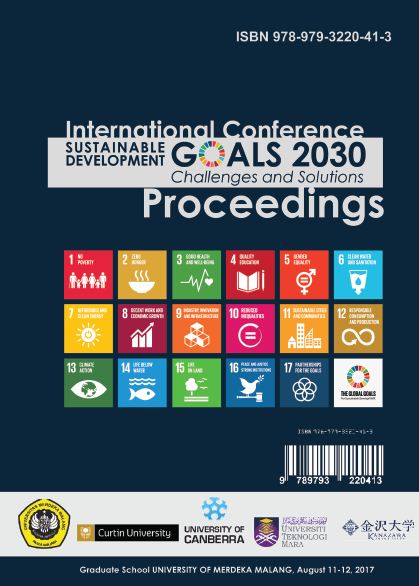Sustainability in Architecture of traditional Sasak settlements in Lombok
DOI:
https://doi.org/10.26905/icgss.v1i1.1842Abstract
Sasak is one of the Indonesian indigenous tribes who live in the island of Lombok. Until now, they still maintain the customs and culture as well as settling in Sembalun, Senaru, Segenter, and Sade. The Large of Sasak traditional settlement area in Lombok is not increased so that it feared the carrying capacity will be exceeded and could lead to a shift of customs and culture. This paper (1) to formulate the concept of a traditional Sasak sustainability settlement, (2) reconstruct the conception and typology of layout, mass configuration, space-organization, structure and building construction homes custom of Sasak, to analyze the sustainability level of Sasak traditional settlement used questionnaires Community Sustainability Analysis. The results obtained in this study is the traditional settlement of the Sasak people - PTSDS is in conformity with the ecovillage concept of Global Ecovillage Network. It is evident from the analysis of data by CSA which finds the total in 1226; with the value of the ecological aspect, the social aspect and the spiritual aspect, respectively 432, 373 and 421, which means the Sasak people - PTSDS shows very good progress on sustainability.Downloads
Downloads
Published
How to Cite
Issue
Section
License
Authors who publish in this journal agree to the following terms: Proceeding of International Conference of Graduate School on Sustainability is licensed under Creative Commons Attribution-ShareAlike 4.0 International. Creative Commons Attribution-ShareAlike 4.0 International License (CC BY 4.0) is applied when mandated by research funders, such as those who have signed. Open Access articles in Jurnal Cakrawala Hukum are published under theCreative Commons Attribution-ShareAlike 4.0 International (CC BY 4.0) license. The copyright of the received article shall be assigned to the journal as the publisher of the journal. The intended copyright includes the right to publish the article in various forms (including reprints). The journal maintains the publishing rights to the published articles. Authors must agree to the copyright transfer agreement by checking the Copyright Notice column at the initial stage when submitting the article.









